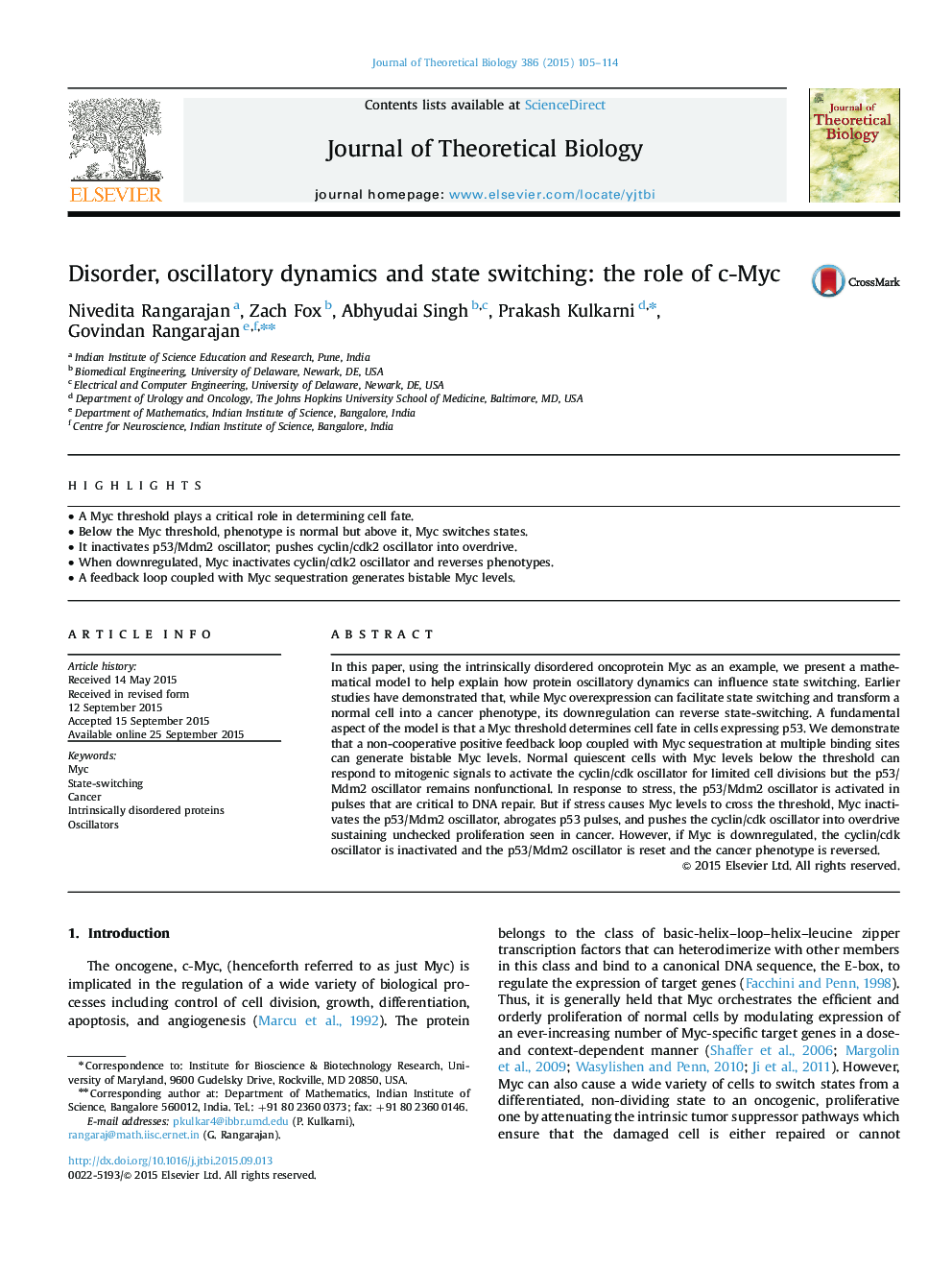| Article ID | Journal | Published Year | Pages | File Type |
|---|---|---|---|---|
| 6369434 | Journal of Theoretical Biology | 2015 | 10 Pages |
Abstract
In this paper, using the intrinsically disordered oncoprotein Myc as an example, we present a mathematical model to help explain how protein oscillatory dynamics can influence state switching. Earlier studies have demonstrated that, while Myc overexpression can facilitate state switching and transform a normal cell into a cancer phenotype, its downregulation can reverse state-switching. A fundamental aspect of the model is that a Myc threshold determines cell fate in cells expressing p53. We demonstrate that a non-cooperative positive feedback loop coupled with Myc sequestration at multiple binding sites can generate bistable Myc levels. Normal quiescent cells with Myc levels below the threshold can respond to mitogenic signals to activate the cyclin/cdk oscillator for limited cell divisions but the p53/Mdm2 oscillator remains nonfunctional. In response to stress, the p53/Mdm2 oscillator is activated in pulses that are critical to DNA repair. But if stress causes Myc levels to cross the threshold, Myc inactivates the p53/Mdm2 oscillator, abrogates p53 pulses, and pushes the cyclin/cdk oscillator into overdrive sustaining unchecked proliferation seen in cancer. However, if Myc is downregulated, the cyclin/cdk oscillator is inactivated and the p53/Mdm2 oscillator is reset and the cancer phenotype is reversed.
Related Topics
Life Sciences
Agricultural and Biological Sciences
Agricultural and Biological Sciences (General)
Authors
Nivedita Rangarajan, Zach Fox, Abhyudai Singh, Prakash Kulkarni, Govindan Rangarajan,
